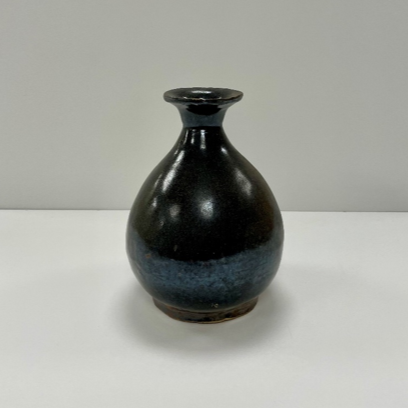This Chinese liquor bottle from the 1880s was found by a local resident near Nay Aug mine, between Hailey and Ketchum.
Nestled within the rugged landscapes of Central Idaho lies a relic that not only speaks of cross-cultural connections, but also unveils a chapter in the state’s history marked by a significant presence of Chinese immigrants. This Chinese liquor bottle from the 1880s, discovered near Nay Aug Mine by local resident Ray Brooks, is newly acquired to the museum’s collection and serves as a symbol of a time when the Chinese immigrant population played an important role in shaping the identity of Idaho.
In the mid to late 1800s, a wave of Chinese immigrants ventured far from their homeland in search of new opportunities. Drawn by the promise of wealth and adventure, many found their way to the mining camps and frontier towns of the American West, including the vast landscapes of Central Idaho.
At its peak, the Chinese immigrant population accounted for a significant 30% of Idaho’s total residents. Their influence extended beyond the bustling mining communities, permeating the fabric of daily life in towns like Hailey, Ketchum, and beyond. As they settled, Chinese immigrants brought with them not only their labor but also their rich cultural heritage, leaving a lasting mark on the evolving identity of the region.
The discovery of this Chinese liquor bottle near Nay Aug Mine takes on a deeper significance when viewed within the context of this demographic shift. This small yet intricately crafted vessel becomes a tangible link to the daily lives of 19th century Chinese immigrants in Idaho, offering a glimpse into their customs, tastes, and the connections they maintained with their homeland.
Chinese immigrants in Idaho were not confined to the peripheries of society. They played key roles in trade, contributing to the economic development of the region. Moreover, the Chinese brought with them their culinary traditions, creating a mix of flavors that left an enduring legacy on Idaho’s culinary landscape. Beyond these contributions, Chinese immigrants formed social networks that provided mutual support and a sense of community in a land far from home.
As we reflect on the significance of the Chinese immigrant population in Idaho, this liquor bottle becomes more than an artifact; it becomes a bridge connecting us to a time when cultures converged and intertwined on the American frontier. The Wood River Museum of History and Culture is honored to preserve this piece of history, recognizing its role in telling a more inclusive and nuanced narrative of Idaho’s past.
From the Ray Brooks Collection (2023.14), Wood River Museum of History and Culture.

